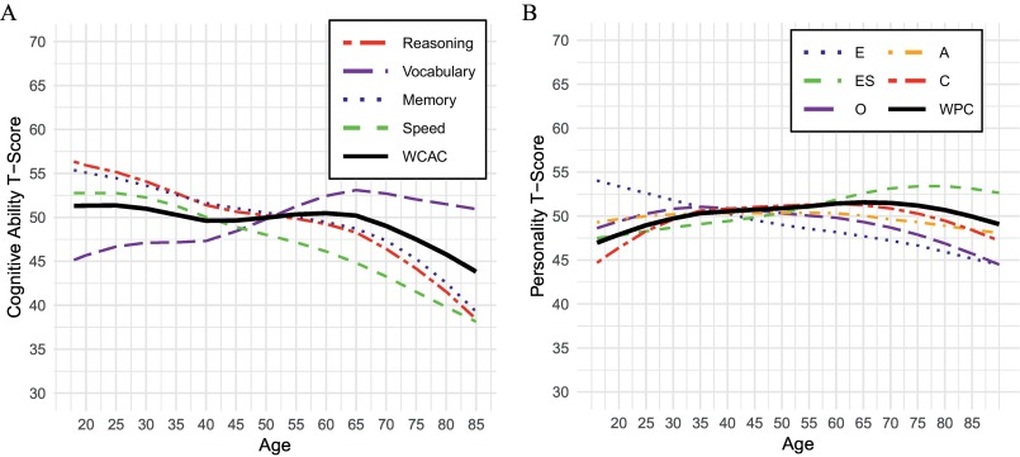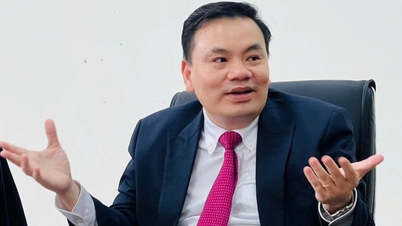
This research explains why middle-aged people may be best at solving complex problems and performing well in leadership positions in the workforce.
Types of brain development peaks
There are numerous studies that show that humans reach their physical peak between their mid-twenties and early thirties.
Many studies also show that people's raw intellectual capacity - that is, the ability to reason, remember, and process information quickly - typically begins to decline from their mid-twenties onwards.
This is reflected in the real world . Athletes tend to peak before their thirties. Mathematicians often make their most important contributions in their mid-thirties. Chess champions rarely peak after their forties.
However, when we look beyond raw processing capabilities, a different picture emerges.
From theory to emotional stability
This research focuses on psychological traits beyond reasoning ability, which are accurately measurable, represent enduring traits rather than temporary states, have well-documented age trajectories, and are known to predict real-world performance.
The research team identified 16 psychological traits that met these criteria.
These traits include core cognitive abilities such as reasoning, memory, processing speed, knowledge, and emotional intelligence. They also include the “big five” personality traits of extraversion, emotional stability, conscientiousness, openness to experience, and agreeableness.
By synthesizing existing large-scale studies, the new study looked at the 16 traits mentioned above. By standardizing these studies on a common scale, the researchers made direct comparisons and mapped the development of each trait across the lifespan.

Some traits peak much later in life. For example, conscientiousness peaks around age 65, and emotional stability peaks around age 75.
Less commonly discussed traits, such as moral reasoning, also seem to peak in adulthood. And the ability to resist cognitive biases—rules of thumb that can lead us to irrational or less accurate decisions—may continue to improve well into our 70s and even 80s.
When combining the age-related trajectories of all 16 traits into a theoretically and empirically weighted index, the team developed a remarkable model.
Mental function generally peaks between the ages of 55 and 60, before beginning to decline from around age 65. This decline becomes more pronounced after age 75, suggesting that functional decline in later life can accelerate once it begins.
Eliminate age stereotypes
These findings may help explain why many of the most demanding leadership positions in business, politics , and public life are typically held by people in their fifties and early sixties.
So, while some abilities decline with age, they are balanced by the development of other important traits. Combined, these strengths support better judgment and better decision-making, qualities that are crucial in leadership.
Despite these research findings, older workers still face more challenges re-entering the workforce after losing their jobs.
To some extent, structural factors may influence hiring decisions. For example, an employer may view hiring a person in their mid-fifties as a short-term investment if the likelihood of retirement at age 60 is high.
In other cases, some jobs have mandatory retirement ages. For example, the International Civil Aviation Organization sets a general retirement age of 65 for pilots of international airlines. Many countries also require air traffic controllers to retire between the ages of 56 and 60. Because these jobs require a high level of memory and concentration, such age limits are generally considered reasonable.
However, each person's brain development characteristics are different.
This study found that while some adults experience declines in reasoning speed and memory, others maintain these abilities much longer.
Thus, age alone does not determine overall cognitive function. Therefore, assessments and evaluations should focus on the individual's actual abilities and characteristics rather than age-based assumptions.
The summit is not a countdown
Overall, these findings highlight the need to recruit and retain talent across age, and reinforce the notion that many people bring valuable strengths to their jobs in midlife.
Charles Darwin published “On the Origin of Species” at age 50. Ludwig van Beethoven premiered his Ninth Symphony at age 53 and profoundly deaf. More recently, Lisa Su, now 55, led the computer company Advanced Micro Devices through one of the industry’s most dramatic technical turnarounds.
History is full of people who achieved their greatest breakthroughs after what society often calls “peak age.” Perhaps it’s time we stop seeing middle age as a countdown and start seeing it as a peak.
Source: https://dantri.com.vn/khoa-hoc/bo-nao-cua-ban-dat-dinh-cao-o-do-tuoi-nao-20251104053823497.htm




![[Photo] Panorama of the Patriotic Emulation Congress of Nhan Dan Newspaper for the period 2025-2030](https://vphoto.vietnam.vn/thumb/1200x675/vietnam/resource/IMAGE/2025/11/04/1762252775462_ndo_br_dhthiduayeuncbaond-6125-jpg.webp)
![[Photo] Opening of the 14th Conference of the 13th Party Central Committee](https://vphoto.vietnam.vn/thumb/1200x675/vietnam/resource/IMAGE/2025/11/05/1762310995216_a5-bnd-5742-5255-jpg.webp)




































































































Comment (0)